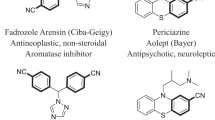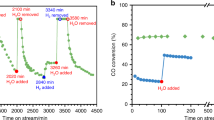Abstract
The impact of interfacial charge on catalytic performance of supported-metal-cluster (SMC) heterostructures remains unclear, hindering efforts to develop high-performance SMC catalysts. Herein we systematically investigated interfacial charge effects of SMCs using a model system of graphene-supported gold-nanoclusters (AuNCs/rGO) for azo hydrogenation. Three types of SMCs with different interfacial charges were synthesized by anchoring electropositive 2-aminoethanethiol (CSH), amphoteric cysteine (Cys), and electronegative 3-mercaptopropionic-acid (MPA) onto AuNCs/rGO, respectively. All three SMCs exhibited high and selective catalytic activity to azo-hydrogenation in four representative azo dyes. The catalytic activity of Cys@AuNCs/rGO was lower than that of CSH@AuNCs/rGO but higher than that of MPA@AuNCs/rGO. However, the cyclic stability of Cys@AuNCs/rGO was inferior to that of both CSH@AuNCs/rGO and MPA@AuNCs/rGO. Further mechanistic studies revealed that amino ligands modified CSH@AuNCs and Cys@AuNCs agglomerated into large-size gold nanoparticles on rGO surface during catalytic reaction under NaBH4 action, leading to reduced efficiency and cyclic stability. Conversely, non-amino ligand modified MPA@AuNCs only partially detached from rGO surface without agglomeration, resulting in better cyclic stability. Protection of amino groups in ligands such as modifying -NH3+ group in Cys into imine to form N-isobutyryl-L-cysteine (NIBC) substantially improved the cyclic stability while maintaining the high activity in the NIBC@AuNCs/rGO catalyst system. Our work provides an approach for developing a highly-active and stable SMC heterostructure catalyst via manipulating interfacial charges in SMC.

Similar content being viewed by others
References
Dong, C. Y.; Li, Y. L.; Cheng, D. Y.; Zhang, M. T.; Liu, J. J.; Wang, Y. G.; Xiao, D. Q.; Ma, D. Supported metal clusters: Fabrication and application in heterogeneous catalysis. ACS Catal. 2020, 10, 11011–11045.
Zhang, L.; Zhu, J.; Li, X.; Mu, S.; Verpoory, F.; Xue, J.; Kou, Z.; Wang, J. Nurturing the marriages of single atoms with atomic clusters and nanoparticles for better heterogeneous electrocatalysis. Interdiscip. Mater. 2020, 1, 51–87.
Xu, L.; Papanikolaou, K. G.; Lechner, B. A. J.; Je, L.; Somorjai, G. A.; Salmeron, M.; Mavrikakis, M. Formation of active sites on transition metals through reaction-driven migration of surface atoms. Science 2023, 380, 70–76.
Corma, A.; Concepción, P.; Boronat, M.; Sabater, M. J.; Navas, J.; Yacaman, M. J.; Larios, E.; Posadas, A.; López-Quintela, M. A.; Buceta, D. et al. Exceptional oxidation activity with size-controlled supported gold clusters of low atomicity. Nat. Chem. 2013, 5, 775–781.
Deng, Y. C.; Guo, Y.; Jia, Z. M.; Liu, J. C.; Guo, J. Q.; Cai, X. B.; Dong, C. Y.; Wang, M.; Li, C. Y.; Diao, J. Y. et al. Few-atom Pt ensembles enable efficient catalytic cyclohexane dehydrogenation for hydrogen production. J. Am. Chem. Soc. 2022, 144, 3535–3542.
Wu, Y. Z.; Wang, L.; Bo, T.; Chai, Z. F.; Gibson, J. K.; Shi, W. Q. Boosting hydrogen evolution in neutral medium by accelerating water dissociation with Ru clusters loaded on Mo2CTx MXene. Adv. Funct. Mater. 2023, 33, 2214375.
Liu, G. H.; Nie, T. Q.; Wang, H. J.; Shen, T. Y.; Sun, X. L.; Bai, S.; Zheng, L. R.; Song, Y. F. Size sensitivity of supported palladium species on layered double hydroxides for the electro-oxidation dehydrogenation of hydrazine: From nanoparticles to nanoclusters and single atoms. ACS Catal. 2022, 12, 10711–10717.
Li, Y. R.; Yan, K. L.; Cao, Y. Q.; Ge, X. H.; Zhou, X. G.; Yuan, W. K.; Chen, D.; Duan, X. Z. Mechanistic and atomic-level insights into semihydrogenation catalysis to light olefins. ACS Catal. 2022, 12, 12138–12161.
Muravev, V.; Parastaev, A.; van den Bosch, Y.; Ligt, B.; Claes, N.; Bals, S.; Kosinov, N.; Hensen, E. J. M. Size of cerium dioxide support nanocrystals dictates reactivity of highly dispersed palladium catalysts. Science 2023, 380, 1174–1179.
Argo, A. M.; Odzak, J. F.; Lai, F. S.; Gates, B. C. Observation of ligand effects during alkene hydrogenation catalysed by supported metal clusters. Nature 2022, 415, 623–626.
Fu, J. L.; Ren, D. Z.; Xiao, M. L.; Wang, K.; Deng, Y. P.; Luo, D.; Zhu, J. B.; Wen, G. B.; Zheng, Y.; Bai, Z. Y. et al. Manipulating Au-CeO2 interfacial structure toward ultrahigh mass activity and selectivity for CO2 reduction. ChemSusChem 2020, 13, 6621–6628.
Chevrier, D. M.; Raich, L.; Rovira, C.; Das, A.; Luo, Z. T.; Yao, Q. F.; Chatt, A.; Xie, J. P.; Jin, R. C.; Akola, J. et al. Molecular-scale ligand effects in small gold-thiolate nanoclusters. J. Am. Chem. Soc. 2018, 140, 15430–15436.
Zhou, Y. H.; Wang, Z. Q.; Ye, B.; Huang, X. B.; Deng, H. Ligand effect over gold nanocatalysts towards enhanced gas-phase oxidation of alcohols. J. Catal. 2021, 400, 274–282.
Brindle, J.; Sufyan, S. A.; Nigra, M. M. Support, composition, and ligand effects in partial oxidation of benzyl alcohol using gold-copper clusters. Catal. Sci. Technol. 2022, 12, 3846–3855.
Zhang, J.; Deo, S.; Janik, M. J.; Medlin, J. W. Control of molecular bonding strength on metal catalysts with organic monolayers for CO2 Reduction. J. Am. Chem. Soc. 2020, 142, 5184–5193.
Liu, Q. G.; Yang, X. F.; Huang, Y. Q.; Xu, S. T.; Su, X.; Pan, X. L.; Xu, J. M.; Wang, A. Q.; Liang, C. H.; Wang, X. K. et al. A Schiff base modified gold catalyst for green and efficient H2 production from formic acid. Energy Environ. Sci. 2015, 8, 3204–3207.
Kaźmierczak, K.; Ramamoorthy, R. K.; Moisset, A.; Viau, G.; Viola, A.; Giraud, M.; Peron, J.; Sicard, L.; Piquemal, J. Y.; Besson, M. et al. Importance of the decoration in shaped cobalt nanoparticles in the acceptor-less secondary alcohol dehydrogenation. Catal. Sci. Technol. 2020, 10, 4923–4937.
Xiong, Y.; Wan, H.; Islam, M.; Wang, W.; Xie, L. L.; Lü, S. F.; Kabir, S. M. F.; Liu, H. H.; Mahmud, S. Hyaluronate macromolecules assist bioreduction (AuIII to Au0) and stabilization of catalytically active gold nanoparticles for azo contaminated wastewater treatment. Environ. Technol. Innov. 2021, 24, 102053.
Wan, H.; Liu, Z. H.; He, Q. J.; Wei, D.; Mahmud, S.; Liu, H. H. Bioreduction (AuIII to Au0) and stabilization of gold nanocatalyst using Kappa carrageenan for degradation of azo dyes. Int. J. Biol. Macromol. 2021, 176, 282–290.
Liu, Y.; Huang, L. P.; Mahmud, S.; Liu, H. H. Gold Nanoparticles biosynthesized using Ginkgo biloba leaf aqueous extract for the decolorization of azo-dyes and fluorescent detection of Cr(VI). J. Clust. Sci. 2023, 31, 549–560.
Antony, A. M.; Kandathil, V.; Kempasiddaiah, M.; Shwetharani, R.; Balakrishna, R. G.; El-Bahy, S. M.; Hessien, M. M.; Mersal, G. A. M.; Ibrahim, M. M.; Patil, S. A. Graphitic carbon nitride supported palladium nanocatalyst as an efficient and sustainable catalyst for treating environmental contaminants and hydrogen evolution reaction. Colloids Surf. A: Physicochem. Eng. Asp. 2022, 477, 129116.
Ecer, Ü.; Şahan, T.; Zengin, A. Synthesis and characterization of an efficient catalyst based on MoS2 decorated magnetic pumice: An experimental design study for methyl orange degradation. J. Environ. Chem. Eng. 2021, 9, 105265.
Vijayan, R.; Joseph, S.; Mathew, B. Eco-friendly synthesis of silver and gold nanoparticles with enhanced antimicrobial, antioxidant, and catalytic activities. IET Nanobiotechnol. 2018, 12, 850–856.
Chen, J. H.; Wei, D.; Liu, Y.; Xiong, Y.; Peng, J. J.; Mahmud, S.; Liu, H. H. Gold/Konjac glucomannan bionanocomposites for catalytic degradation of mono-azo and di-azo dyes. Inorg. Chem. Commun. 2020, 120, 108156.
Naseem, K.; Ali, F.; Tahir, M. H.; Afaq, M.; Yasir, H. M.; Ahmed, K.; Aljuwayid, A. M.; Habila, M. A. Investigation of catalytic potential of sodium dodecyl sulfate stabilized silver nanoparticles for the degradation of methyl orange dye. J. Mol. Struct. 2022, 1262, 132996.
Tian, C.; Kasavajhala, K.; Belfon, K. A. A.; Raguette, L.; Huang, H.; Migues, A. N.; Bickel, J.; Wang, Y. Z.; Pincay, J.; Wu, Q. et al. ff19SB: Amino-acid-specific protein backbone parameters trained against quantum mechanics energy surfaces in solution. J. Chem. Theory Comput. 2020, 16, 528–552.
Jung, J.; Kang, S.; Han, Y. K. Ligand effects on the stability of thiol-stabilized gold nanoclusters: Au25(SR)18−, Au38(SR)24, and Au102(SR)44. Nanoscale 2012, 4, 4206–4210.
Ackerson, C. J.; Jadzinsky, P. D.; Kornberg, R. D. Thiolate ligands for synthesis of water-soluble gold clusters. J. Am. Chem. Soc. 2005, 127, 6550–6551.
Deng, H. H.; Huang, K. Y.; Xiu, L.; Sun, W. M.; Yao, Q. F.; Fang, X. Y.; Huang, X.; Noreldeen, H. A. A.; Peng, H. P.; Xie, J. P. et al. Bis-Schiff base linkage-triggered highly bright luminescence of gold nanoclusters in aqueous solution at the single-cluster level. Nat. Commun. 2022, 13, 3381.
Ding, Y.; Maitra, S.; Wang, C.; Halder, S.; Zheng, R.; Barakat, T.; Roy, S.; Chen, L.; Su, B. Vacancy defect engineering in semiconductors for solar light-driven environmental remediation and sustainable energy production. Interdiscip. Mater. 2022, 213–255.
Wang, L.; Hao. X.; Gao, Z.; Yang, Z.; Long, Y.; Luo, M.; Guan, J. Artificial nanomotors: fabrication, locomotion characterization, motion manipulation, and biomedical applications. Interdiscip. Mater. 2022, 1, 256–280.
Acknowledgements
This work was supported by the National Natural Science Foundation of China (Nos. 52273110, 21975191, 52372271 and 22173070), the Knowledge Innovation Program of Wuhan Shuguang Project, and the Fundamental Research Funds for the Central Universities (WUT: 2023III013GX).
Author information
Authors and Affiliations
Corresponding authors
Electronic Supplementary Material
Rights and permissions
About this article
Cite this article
Gu, Z., Zhang, J., Zhang, Z. et al. Interfacial charge effects of supported-metal-cluster heterostructures on azo hydrogenation catalyzation. Nano Res. 17, 3853–3862 (2024). https://doi.org/10.1007/s12274-023-6358-7
Received:
Revised:
Accepted:
Published:
Issue Date:
DOI: https://doi.org/10.1007/s12274-023-6358-7




